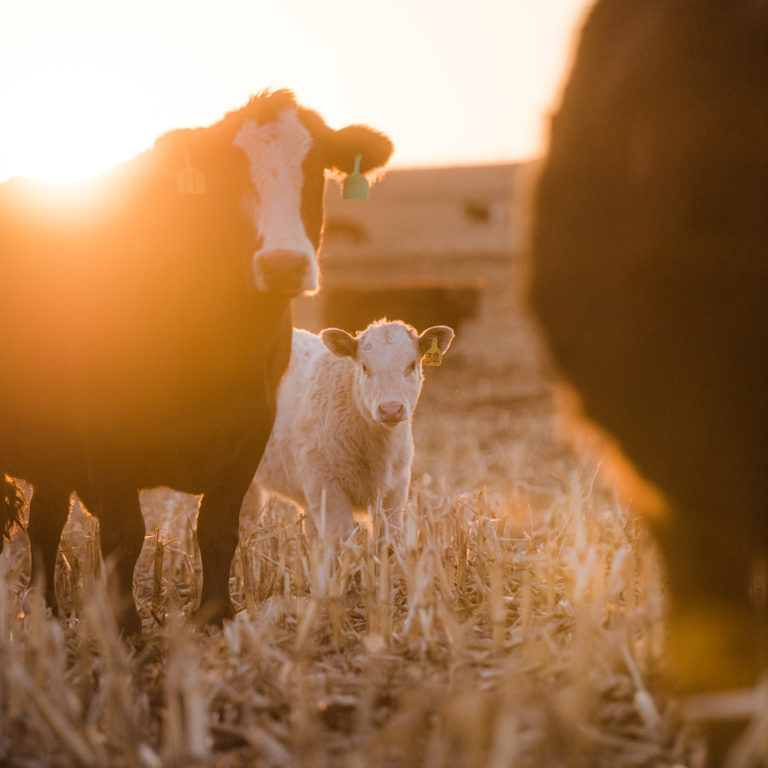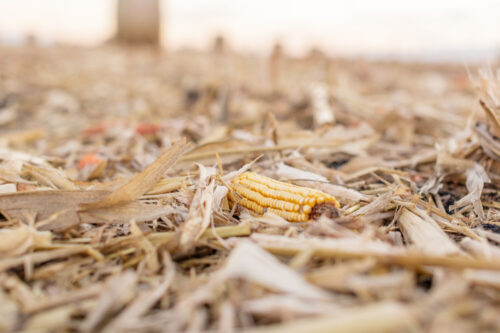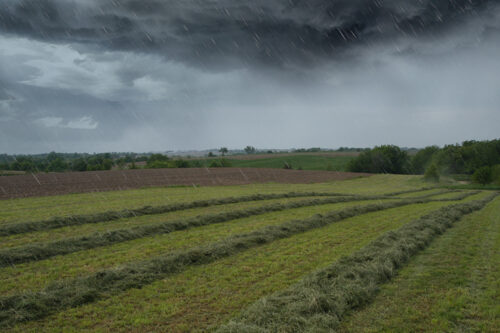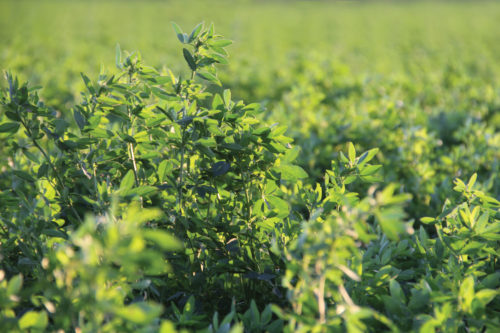
Getting creative with crop residues
November 2019
As we continue into the fall harvest season, residue from many different crops such as corn, milo, soybeans, potatoes, and sugar beets can be used as feed for cows. Most commonly crop residues are grazed rather than baled since baling and manure management costs are minimized; however, grazing requires that a water source is provided and fencing is available.
Inadequate water availability while grazing crop residues can be an overlooked cause of health and production problems. Insufficient space for animals to drink, low flow rates, low storage capacity, high mineral content, or unfamiliar taste can all discourage water consumption to the point that intake is reduced or health is compromised. In addition heavy snow or ice may make residue grazing impossible and it is advisable that producers have a supply of emergency forage to use if needed.
The residue from different crops has very different nutrient profiles and different risks so it is important to be familiar with the residues that you are likely to graze or feed. While residue from soybean fields provides very little energy and protein once the residual beans are gleaned, corn and milo fields provide a great deal of forage with an estimate of about 50 pounds (22.7 kg) of residue per bushel of corn harvested. Because cows prefer to eat downed ears, leaves and husks, and delay or avoid eating stalks and cobs, about 20-25% of the available residue can be expected to be consumed – meaning that each acre of harvested corn can provide 40 or more days of grazing if the field had a yield of at least 120 bushels per acre (8 tonnes per hectare).
Since cattle will consume the parts of the plant that have the greatest level of nutrition first (grain and leaves), the amount of energy and protein provided by residue grazing will start relatively high and then decrease the longer the cattle are on the field as the cows are forced to consume lower-quality plant parts such as the stalk and cob. Protein is important for its role in enhancing appetite and increasing forage digestibility, and providing supplemental protein may be needed in some residue grazing situations. When protein or energy supplementation is needed to maintain good body condition for cows grazing crop residues, it is often possible and preferable to provide the supplement on the residue field to minimize manure hauling and to allow the cattle to continue to pick at the residue as weather conditions permit.
"In many parts of the country, cow herds and crop fields are located close enough together to provide the opportunity for access to low-cost forage in the form of crop residues."One potential problem when grazing standing residues from corn, sorghum and other crop fields, is the risk of nitrate toxicity. Nearly all plants contain nitrate, but some plants are more likely to accumulate nitrate than others. Under certain environmental conditions, wheat, corn, milo, soybeans and other plants accumulate toxic levels of nitrate. Nitrate content generally is highest in young plant growth and decreases with maturity, but nitrate will accumulate in mature plants if stressed due to drought, frost, hail or disease.
In many parts of the country, cow herds and crop fields are located close enough together to provide the opportunity for access to low-cost forage in the form of crop residues. Challenges to provide adequate fencing and water availability as well as risk of heavy snow or ice or nitrate toxicity can limit use of crop residues, but in many situations, grazing crop residues can provide benefits to both the cattle producer and the crop farmer.
***
This article was written by Bob Larson, Kansas State University, and originally published in the October 2018 Angus Journal and is reprinted with their permission.
Information noted above was gathered from a third party who was advised his/her experience might be featured in marketing materials. This article contains third-party observations, advice or experiences that do not necessarily reflect the opinions of Vermeer Corporation, its affiliates or its dealers. Individual results may vary based on care and operation of machine and crop and field conditions, which may adversely affect performance.






